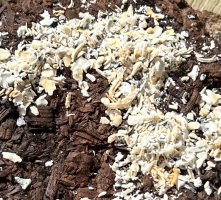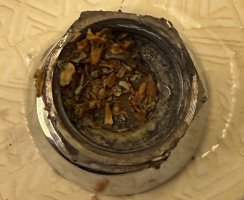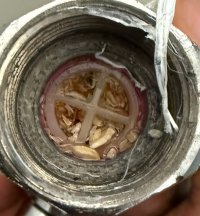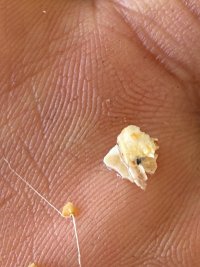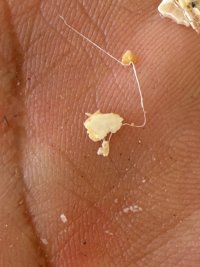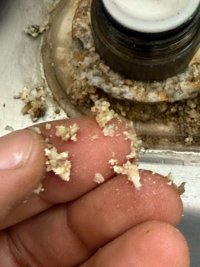Kevin12345
New Member
Hi,
We have a property with two manufactured houses. One house came with an old tank-style water heater already installed. The other house didn’t have a water heater, so about nine months ago, we installed a new tankless water heater along with new PEX piping.
The house with the old tank water heater hasn’t had any issues so far. However, the house with the new tankless water heater has been producing a significant amount of white buildup, which keeps clogging the faucets. I cleaned the buildup with chemicals just a month ago, but I’ve already noticed a considerable amount forming again. I researched the issue and found that tankless water heaters—especially models that can’t be set below 120°F—tend to cause more mineral buildup than traditional tank water heaters.
When I installed the tankless water heater, I also added a Scale-RX filter. Based on my experience, it hasn’t been effective, or the water might be too hard for it to work properly.
I reviewed the water report, which showed iron levels between 300 ppm and 1500 ppm—an extremely high range. However, I believe this might be a typo. It’s likely 1500 parts per billion (ppb) instead of parts per million (ppm), making the actual iron level between 3 ppm and 15 ppm. While still high, it’s not as excessive as initially reported.
I spoke with a company that sells water softeners, and they mentioned that a regular water softener should work fine without an iron filter.
I’m now considering installing a water softener without an iron filter. In my research, I found that many people use either Fleck or Aquasure systems. However, I came across some negative reviews about Aquasure, mentioning bead leakage that caused significant damage to connected equipment and pipes. I haven’t seen similar reviews for Fleck.
Is this because Fleck offers better quality than Aquasure? Could you explain what typically causes bead leakage in Aquasure water softeners and if there are ways to prevent it?
By the way, there isn’t enough space to install a large water softener.
If there’s a reliable compact version available, please let me know.
If not, I’ll need to find a way to install either the Aquasure or Fleck system.
I would appreciate any advice you can provide.
Thank you!
We have a property with two manufactured houses. One house came with an old tank-style water heater already installed. The other house didn’t have a water heater, so about nine months ago, we installed a new tankless water heater along with new PEX piping.
The house with the old tank water heater hasn’t had any issues so far. However, the house with the new tankless water heater has been producing a significant amount of white buildup, which keeps clogging the faucets. I cleaned the buildup with chemicals just a month ago, but I’ve already noticed a considerable amount forming again. I researched the issue and found that tankless water heaters—especially models that can’t be set below 120°F—tend to cause more mineral buildup than traditional tank water heaters.
When I installed the tankless water heater, I also added a Scale-RX filter. Based on my experience, it hasn’t been effective, or the water might be too hard for it to work properly.
I reviewed the water report, which showed iron levels between 300 ppm and 1500 ppm—an extremely high range. However, I believe this might be a typo. It’s likely 1500 parts per billion (ppb) instead of parts per million (ppm), making the actual iron level between 3 ppm and 15 ppm. While still high, it’s not as excessive as initially reported.
I spoke with a company that sells water softeners, and they mentioned that a regular water softener should work fine without an iron filter.
I’m now considering installing a water softener without an iron filter. In my research, I found that many people use either Fleck or Aquasure systems. However, I came across some negative reviews about Aquasure, mentioning bead leakage that caused significant damage to connected equipment and pipes. I haven’t seen similar reviews for Fleck.
Is this because Fleck offers better quality than Aquasure? Could you explain what typically causes bead leakage in Aquasure water softeners and if there are ways to prevent it?
By the way, there isn’t enough space to install a large water softener.
If there’s a reliable compact version available, please let me know.
If not, I’ll need to find a way to install either the Aquasure or Fleck system.
I would appreciate any advice you can provide.
Thank you!

